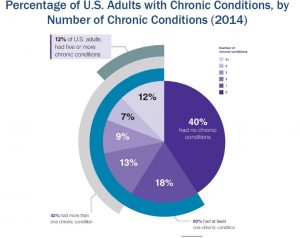Report on Advances in Prostate Cancer Research and Alignment with Sustainable Development Goals
1.0 Executive Summary
A multi-institutional research effort has identified a specific macrophage subtype that facilitates prostate cancer progression by creating an immune-suppressive microenvironment. The study reveals that macrophages marked by SPP1 and TREM2 proteins are a key vulnerability in prostate tumors. Experimental targeting of this subtype enhanced the efficacy of immunotherapy in preclinical models. These findings represent a significant advancement in precision oncology and contribute directly to the objectives of Sustainable Development Goal 3 (SDG 3): Good Health and Well-being, by paving the way for novel therapeutic strategies against a globally prevalent cancer.
2.0 Key Research Findings
The study yielded several critical insights into the prostate tumor microenvironment:
- Identification of Pro-Tumoral Macrophages: A distinct macrophage subtype characterized by the expression of SPP1 and TREM2 proteins was identified.
- Spatial Location: Using spatial analysis, these SPP1/TREM2 macrophages were found to be located deep inside tumor regions, in direct contact with cancer cells, whereas potentially tumor-fighting macrophages remained outside the tumor boundaries.
- Functional Role: The SPP1/TREM2 subtype is directly linked to processes that aid cancer, including angiogenesis (blood vessel growth), impaired immune activity, and metastasis.
- Mechanism of Immunosuppression: The presence of these cells fosters an immune-suppressive environment, hindering the body’s natural T-cell-mediated anti-cancer response.
3.0 Research Methodology
A combination of advanced analytical techniques was employed to ensure the robustness and applicability of the findings:
- Advanced Transcriptomics: The research integrated single-cell RNA sequencing, spatial transcriptomics, and NanoString digital spatial profiling to comprehensively map immune cell types, functions, and locations within the tumor.
- Large-Scale Data Analysis: Findings were validated against large, publicly available datasets from hundreds of human prostate cancer patients to confirm their relevance across different disease stages.
- Preclinical Modeling: In vivo experiments were conducted in mouse models of prostate cancer to test the therapeutic potential of targeting the identified pathway.
4.0 Implications for Global Health and Sustainable Development Goal 3
Prostate cancer is the second most commonly diagnosed cancer in men globally, making this research critical for public health and the achievement of global development targets.
4.1 Advancing Cancer Treatment
- New Therapeutic Target: The identification of the SPP1/TREM2 macrophage subtype provides a novel and specific target for therapeutic intervention.
- Overcoming Immunotherapy Resistance: In preclinical trials, blocking the SPP1 protein made prostate tumors significantly more vulnerable to immune checkpoint inhibitors, a class of drugs that has previously failed in this cancer type.
- Enhanced Immune Response: The combination of anti-SPP1 treatment with immunotherapy successfully reversed immunosuppression, allowing for greater T-cell infiltration and resulting in slowed cancer progression.
4.2 Contribution to SDG 3: Good Health and Well-being
- Reducing Premature Mortality: This work directly supports SDG Target 3.4, which calls for a one-third reduction in premature mortality from non-communicable diseases, including cancer, through prevention and treatment.
- Addressing a Global Disease Burden: By providing a potential solution for a widespread cancer, the research contributes to improving health outcomes for men worldwide, a core tenet of SDG 3.
- Fostering Precision Medicine: The study exemplifies the power of precision medicine to develop more effective and targeted treatments, aligning with the SDG 3 goal of promoting well-being for all at all ages.
5.0 Collaborative Effort and Support
This research is the result of a significant multi-institutional and international collaboration, including Virginia Tech, Harvard Medical School, Massachusetts General Hospital, the University of Chicago, and the Karolinska Institute. The project received support from the Prostate Cancer Foundation and the National Institutes of Health. Such partnerships are vital for scientific advancement and reflect the principles of SDG 17: Partnerships for the Goals.
6.0 Conclusion
The study provides a detailed map of a previously hidden mechanism in prostate cancer progression and presents a promising, actionable strategy to overcome therapeutic resistance. By integrating advanced genomics and computational oncology, this research not only deepens biological understanding but also offers a potential pathway to new clinical solutions. The findings represent a tangible contribution to the global effort to combat cancer and achieve the targets outlined in Sustainable Development Goal 3.
Analysis of Sustainable Development Goals (SDGs) in the Article
1. Which SDGs are addressed or connected to the issues highlighted in the article?
-
SDG 3: Good Health and Well-being
The article’s primary focus is on prostate cancer research, a major global health issue. It discusses understanding the disease, developing new treatments, and improving patient outcomes, which directly aligns with the goal of ensuring healthy lives and promoting well-being for all at all ages.
-
SDG 9: Industry, Innovation, and Infrastructure
The research described relies heavily on scientific innovation and advanced technology. The article mentions the use of “single-cell RNA sequencing, spatial transcriptomics, and NanoString digital spatial profiling” to make new discoveries. This highlights the role of enhancing scientific research and technological capabilities to address complex problems like cancer.
-
SDG 17: Partnerships for the Goals
The article explicitly states that the research is a “multi-institutional collaboration” involving universities (Virginia Tech, Harvard), hospitals (Massachusetts General Hospital), and international institutes (Sweden’s Karolinska Institute). It also mentions funding from the Prostate Cancer Foundation and the National Institutes of Health, showcasing a multi-stakeholder partnership that mobilizes financial resources, knowledge, and expertise to achieve a common goal.
2. What specific targets under those SDGs can be identified based on the article’s content?
-
Target 3.4: Reduce premature mortality from non-communicable diseases
The article addresses this target by focusing on prostate cancer, a non-communicable disease. The research aims to develop more effective treatments by combining anti-SPP1 therapy with immunotherapy, which was shown to result in “slowed cancer progression.” This work directly contributes to the goal of reducing mortality from such diseases through improved treatment.
-
Target 9.5: Enhance scientific research and upgrade technological capabilities
The study exemplifies this target by using advanced techniques to “uncover vulnerabilities that we couldn’t see before.” The combination of “single-cell analysis” and “spatial analysis” represents an enhancement of scientific research methods. The goal to find “actionable solutions for the problem of cancers” through “integrating cancer genomics and computational oncology expertise” is a direct effort to encourage innovation and upgrade technological capabilities in the medical research field.
-
Target 17.16: Enhance the Global Partnership for Sustainable Development
This target is demonstrated by the “multi-institutional collaboration” described in the article. The partnership involves academic, medical, and research institutions from the United States and Sweden, which “mobilize and share knowledge, expertise, technology and financial resources.” The involvement of physician-scientists who provided “patient samples and clinical insights” is a clear example of sharing expertise to support the research goal.
-
Target 17.17: Encourage and promote effective public, public-private and civil society partnerships
The project is a model of this target. It involves universities (public and private institutions), a foundation (Prostate Cancer Foundation – civil society), and a government agency (National Institutes of Health – public). This collaboration builds on the “experience and resourcing strategies” of different partners to fund and execute complex scientific research.
3. Are there any indicators mentioned or implied in the article that can be used to measure progress towards the identified targets?
-
For Target 3.4:
An implied indicator is the incidence and mortality rate of cancer (Indicator 3.4.1). The article provides a statistic on the burden of the disease: “an estimated 1.47 million new cases worldwide in 2022.” The success of the research, which “slowed cancer progression” in mice, suggests a potential future impact on reducing the mortality rate associated with prostate cancer.
-
For Target 9.5:
The article points to Research and development expenditure (Indicator 9.5.1) by mentioning that the project was “supported by the Prostate Cancer Foundation” and the “National Institutes of Health.” This highlights the private and public R&D spending directed towards this specific scientific research. The mention of “cancer research faculty” and “physician-scientists” also implies the presence of Researchers per million inhabitants (Indicator 9.5.2) engaged in this work.
-
For Targets 17.16 and 17.17:
While not a formal quantitative indicator, the article provides qualitative evidence of progress. The explicit description of the multi-stakeholder partnership itself serves as an indicator. The list of collaborators—”Virginia Tech, Harvard Medical School, Massachusetts General Hospital, the University of Chicago, and Sweden’s Karolinska Institute”—and funding partners—”Prostate Cancer Foundation” and “National Institutes of Health”—documents the existence and nature of the partnership, which is a measure of achieving these targets.
4. Table of SDGs, Targets, and Indicators
| SDGs | Targets | Indicators Identified in the Article |
|---|---|---|
| SDG 3: Good Health and Well-being | 3.4: By 2030, reduce by one-third premature mortality from non-communicable diseases through prevention and treatment. | Indicator 3.4.1 (Implied): The article provides cancer incidence data (“1.47 million new cases worldwide in 2022”) and the research aims to slow cancer progression, directly impacting the mortality rate from this non-communicable disease. |
| SDG 9: Industry, Innovation, and Infrastructure | 9.5: Enhance scientific research, upgrade the technological capabilities of industrial sectors… encouraging innovation. | Indicator 9.5.1 (Mentioned): Research and development expenditure is shown through funding from the “Prostate Cancer Foundation” and the “National Institutes of Health.” Indicator 9.5.2 (Implied): The involvement of “cancer research faculty” and “physician-scientists” points to the number of researchers involved. |
| SDG 17: Partnerships for the Goals | 17.16: Enhance the Global Partnership for Sustainable Development, complemented by multi-stakeholder partnerships.
17.17: Encourage and promote effective public, public-private and civil society partnerships. |
Qualitative Indicator: The existence of a “multi-institutional collaboration” (Virginia Tech, Harvard, etc.) and funding from both civil society (“Prostate Cancer Foundation”) and public (“National Institutes of Health”) sources serves as direct evidence of these partnerships in action. |
Source: news.vt.edu







